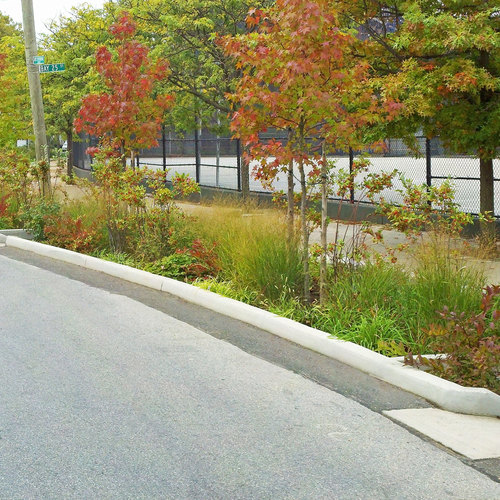
There are countless paved areas of our roadbed that are sitting idle, devoid of beauty and serving little purpose. Through the Greenstreets program, and most recently in partnership with the Department of Environmental Protection (DEP), we have been converting these eyesores into green infrastructure that absorbs stormwater while providing a pleasant experience for pedestrians, a safe driving route, and new habitats for plants and wildlife. By thoughtfully designing these spaces to mimic natural systems, Greenstreets require minimal care and have a low burden on our maintenance infrastructure.
Green infrastructure is most effective as a network of functional green spaces woven into the fabric of the urban environment. This decentralized approach translates to the improvement of the everyday life of New Yorkers citywide, in the spirit of MillionTrees and Schoolyards to Playgrounds.
New York has plans for sewer overflow abatement via green infrastructure for approximately half of the city, but we need to consider how to implement these programs citywide. A 5,000 Greenstreet program across the remainder of the city where these installations are feasible would have a considerable impact: increasing green space by 160 acres, lessening the impact of the urban heat island effect, absorbing increasingly intense storms, and improving the everyday life of New Yorkers.
Last year during Superstorm Sandy, one greenstreet absorbed every drop of the storm — over 40,000 gallons of water in one 1,500-square-foot site. This type of infrastructure is essential to alleviate the impact of extreme events like Sandy as well as incremental climate changes projected in the coming decades.
Nette Compton is Director of Green Infrastructure at the New York City Department of Parks and Recreation, a division devoted to designing engineered landscapes that transform unused areas of New York into vibrant urban ecosystems.
Image: New York City Department of Parks & Recreation.